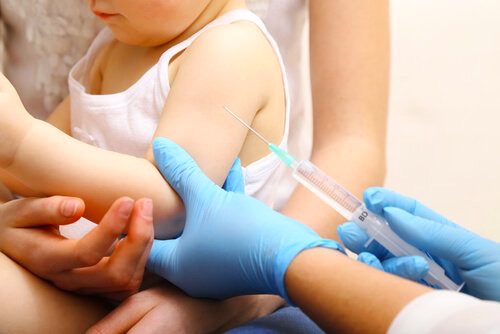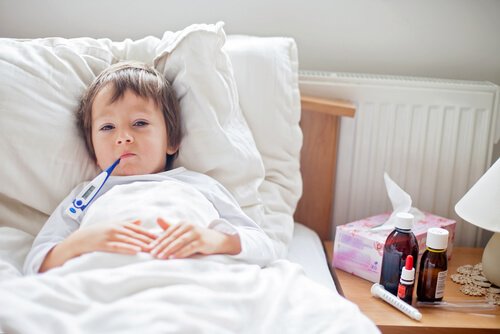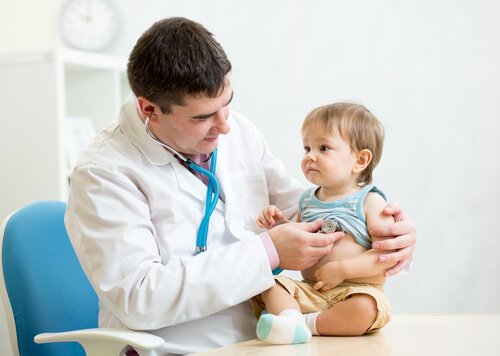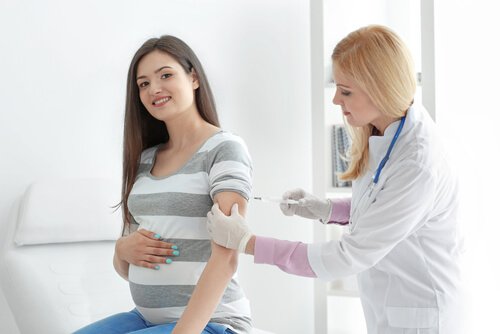Whooping Cough Vaccine: What You Need to Know

Vaccines have become a controversial subject lately. The whooping cough vaccine is recommend during pregnancy, as well as during the baby’s early childhood.
Whooping cough is a very dangerous illness. While this is especially true for babies, it can strike at any age. For this reason, your vaccination calendar during pregnancy and the first years of your child’s life should definitely include the whooping cough vaccine.
Vaccinating a child is the parent’s decision, but it’s important to always speak with your doctor and know what protection the vaccine offers. In short, it immunizes the child against the illness for a guaranteed period of time.
What is whooping cough?
Whooping cough is a respiratory infection resulting from the bacteria Bordetella pertussis. It’s highly contagious, and initially manifests as a common cold that becomes more complicated over time. It presents symptoms like teariness, sneezing, and a light cough.

After the first two weeks of symptoms resembling those of the common cold, the cough becomes more persistent, provoking episodes of asphyxia, vomiting, etc.
In small children and babies, the illness can lead to serious complications.
How to protect your child from whooping cough
Currently, the most effective method of protecting your child from whooping cough is vaccination.
Vaccines with this purpose are administered throughout early childhood, although they can be performed during pregnancy when the child is still in the mother’s womb.
In this case, the mother receives the vaccination. This way, the baby receives protection from the illness through the first two months of his or her life, at which point he or she receives another dose.
This comes in the form of the trivalent vaccine, which also protects against tetanus and diphtheria. The trivalent vaccine is applied at about 27-32 weeks of gestation.
Once the baby is born, and following the vaccination calendar, the child is protected from whooping cough via periodic vaccinations using combined or prepared vaccines.
“I cannot think of any need in childhood as strong as the need for a father’s protection.”
–Sigmund Freud

What are the potential effects of the whooping cough vaccine?
All vaccines prepare our bodies to defend themselves against a particular pathogenic agent, which is why it’s normal for there to be some adverse symptoms following vaccination.
A low-grade fever or a slight redness in the injection area are both very normal. There can also be an increase in irritability or sleeplessness for some days following the vaccination.
If the fever exceeds 40ºC, we recommend that you see a doctor immediately. More serious contraindications such as persistent crying syndrome and epileptic crises are very unlikely.
If your child is allergic to one of the vaccine’s components, he or she shouldn’t receive the vaccine.
Are there still whooping cough outbreaks?
Modern medicine has yet to eradicate the illness. There are about 195,000 cases around the world every year. In Spain, the number of cases isn’t insignificant, although the high vaccine coverage has kept it relatively controlled.

In recent years, there has been a rise in the number of cases in children under six months in Spain, which is why the Spanish Pediatric Association recommends sticking to the vaccination calendar.
It’s also advisable for those who have more direct contact with children, such as parents, grandparents, and healthcare professionals.
Without a doubt, when it comes to protecting your child’s health, you can’t be too careful. For this reason, we recommend asking your doctor about the whooping cough vaccine, as well as other vaccines scheduled for pregnancy and early childhood.
All cited sources were thoroughly reviewed by our team to ensure their quality, reliability, currency, and validity. The bibliography of this article was considered reliable and of academic or scientific accuracy.
- Campins M, Moreno-Pérez D, Gil-de Miguel A, et al. Tos ferina en España. Situación epidemiológica y estrategias de prevención y control. Recomendaciones del Grupo de Trabajo de Tos ferina. Enferm Infecc Microbiol Clin. 2013; 31 (4): 240-253. doi:10.1016/j.eimc.2012.12.011
- Moreno D, Baquero F, Gonzalo R, Cilleruelo M. Tos ferina. Protocolos diagnóstico-terapéuticos de la AEP: Infectología pediátrica. [En línea].
- VV.AA. Tos ferina (tos convulsiva o convulsa, o coqueluche). Manual MSD- Versión para profesionales. [En línea].
